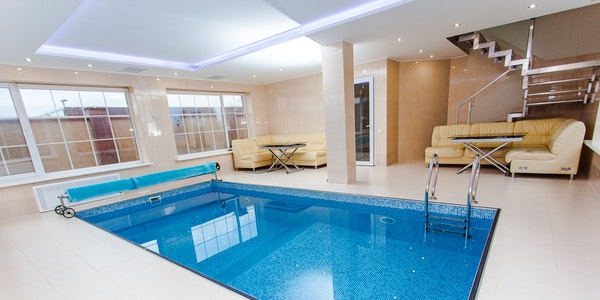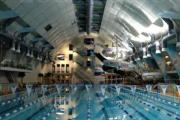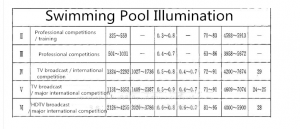 Swimming pool refers to artificially constructed pools for people to perform various swimming or activities in the water, as well as different shapes of pools for people to entertain, relax, and fitness on or in the water. It is a competition pool, a commercial pool, a public pool, and a dedicated pool General name for private swimming pools and recreational pools. There were no swimming events in the ancient Olympics, but the swimming sport-which is directly controlled by human beings. In the struggle against nature, in order to survive and sometimes for entertainment, humans gradually mastered swimming skills. Until 1896, the swimming event entered the first modern Olympic Games. From May 1st, 1957, the FINA regulations only recognized the world record set in the 50-meter standard pool. The international standard swimming pool is 50 meters long, at least 25 meters wide and more than 2 meters deep. There are 8 lanes, each of which is 2.5 meters wide. The outer lanes of the first and eighth lanes are 2.5 meters from the wall.
Swimming pool refers to artificially constructed pools for people to perform various swimming or activities in the water, as well as different shapes of pools for people to entertain, relax, and fitness on or in the water. It is a competition pool, a commercial pool, a public pool, and a dedicated pool General name for private swimming pools and recreational pools. There were no swimming events in the ancient Olympics, but the swimming sport-which is directly controlled by human beings. In the struggle against nature, in order to survive and sometimes for entertainment, humans gradually mastered swimming skills. Until 1896, the swimming event entered the first modern Olympic Games. From May 1st, 1957, the FINA regulations only recognized the world record set in the 50-meter standard pool. The international standard swimming pool is 50 meters long, at least 25 meters wide and more than 2 meters deep. There are 8 lanes, each of which is 2.5 meters wide. The outer lanes of the first and eighth lanes are 2.5 meters from the wall.
Classification of swimming pools
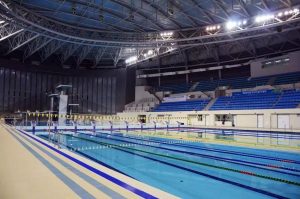 1.Competition pool
1.Competition pool
Pools for competitive games or training in corresponding events. The size, depth and facilities of its pools meet the standard requirements for the corresponding level of competitions, and have been recognized by the corresponding sports department or organization. This type of swimming pool is open to the public during off-season.
2.Public swimming pool
It is set up in hotels, clubs, clubs, residential areas, enterprises, schools and other units to meet the needs of personnel in the area and the unit. It can also be used by other members of society or for amateur competitions and teaching. The flat size of the pool can be used as the competition pool, but the water depth is shallow.
3.Dedicated swimming pool
Non-private swimming pools that are only used by athletes for training, sports professional teaching, and members of specific communities, and are not open to the public. The plane size, pool and shape of this type of swimming pool are determined according to the training project or use requirements. 4. Private swimming pools Non-commercial pools built in villas and houses. Only for private use and its guests, the pool is small, variable in shape, and shallow in depth.
4.Recreation pool
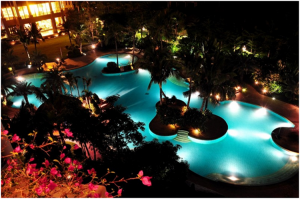 Various recreational facilities and shallow pools with different shapes and shallow water depths are installed and installed for the main purposes of leisure, entertainment and playing in the water. Such as toddler and adult paddling pools, children’s swimming pools, slide drop pools, wave-making pools, circulating rivers, bubble pools, etc.
Various recreational facilities and shallow pools with different shapes and shallow water depths are installed and installed for the main purposes of leisure, entertainment and playing in the water. Such as toddler and adult paddling pools, children’s swimming pools, slide drop pools, wave-making pools, circulating rivers, bubble pools, etc.
5.Slide slide pool
A pool constructed to ensure that people can safely slide from the high platform through the surface of various types of slides to the end of the slide plate, and provide fall buffers and exits for players. The surface of the slide plate maintains a certain thickness and a continuous flow of water flows from the top plate surface of the slide plate along the entire slide plate surface into the slide drop pool.
6.Wave Pool
Artificially constructed pools that can generate continuous circular waves similar to rivers and seas at the deep end and dissipate in the shoal area through the pool for people’s entertainment. The pool is raised from the deep end to the other end according to the prescribed length and slope until the bottom of the pool is level with the ground, and a wave-making facility is provided at the deep end.
7.Jacuzzi
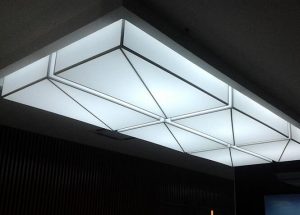 A artificially manufactured or constructed pool that uses injected air to introduce a jet of water with a certain pressure to impact different parts of the human body for local muscle massage.
A artificially manufactured or constructed pool that uses injected air to introduce a jet of water with a certain pressure to impact different parts of the human body for local muscle massage.
8.Paddling pool
Artificially constructed, highly interesting and attractive water recreational pool.
9.Soaking foot disinfection tank
A pool containing a certain concentration of disinfection solution is provided for each swimmer and amusement player to enter the swimming pool or the leisure amusement pool and forcibly receive foot disinfection. No matter what type of swimming pool, the water quality of the swimming pool needs to be strictly disinfected. The water quality of the swimming pool should comply with the current industry standard “Swimming Pool Water Quality Standard” CJ / T 244. To hold important international swimming competitions and the water quality of swimming pools with special requirements shall meet the requirements of the International Swimming Federation and relevant professional departments. Daisile Group takes “protecting human ecological civilization” as its mission, based on water, focuses on water and indoor air, deeply cultivates the “water environment & water ecology” governance spiritual domain, and is committed to providing advanced system solutions for the world’s water environment and indoor artificial environment. Program. With persistent and meticulous professionalism, Dai Sile will certainly realize the vision of “being a respected enterprise in global water governance”, and rebuild a healthy and ecological living environment for the world and make its own contribution!
Significance of swimming pool lighting
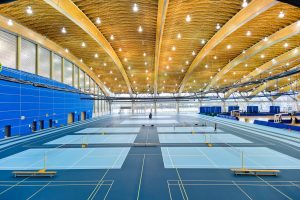 Swimming is a very popular sport in summer. With the holding of various events and the improvement of economic level, various indoor swimming competitions, the construction of teaching venues and the operation of professional swimming pool lighting have gradually entered the majority of operators. Sight, good lighting can not only improve the athlete’s or user’s exercise level and change their mentality, but also improve the safety factor and enhance the efficiency of the stadium. With the development of swimming, people have more and more high requirements for swimming pool facilities while enjoying swimming. Good venues, equipment, and lights can bring great joy to swimming athletes. However, the most important and most difficult thing to deal with is the light element.
Swimming is a very popular sport in summer. With the holding of various events and the improvement of economic level, various indoor swimming competitions, the construction of teaching venues and the operation of professional swimming pool lighting have gradually entered the majority of operators. Sight, good lighting can not only improve the athlete’s or user’s exercise level and change their mentality, but also improve the safety factor and enhance the efficiency of the stadium. With the development of swimming, people have more and more high requirements for swimming pool facilities while enjoying swimming. Good venues, equipment, and lights can bring great joy to swimming athletes. However, the most important and most difficult thing to deal with is the light element.
Swimming Pool Illumination Requirements
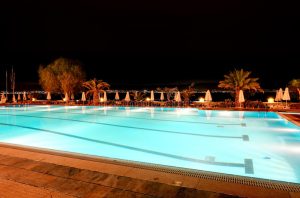 In recent years, with the continuous development of China’s sports industry and the success of bidding for the Olympic Games, a climax period in the construction of sports stadiums has occurred in China, and many cities have begun to build indoor sports stadiums with higher standards. For sports venues of different sports, their indoor lighting requirements are also different. Among them, indoor swimming pools are prone to glare and other problems if they are improperly designed due to the undulating water surface. For swimming pools with high demand, lighting design is an essential part of the swimming pool construction process. Scientific and reasonable swimming pool lighting design can not only ensure the normal development of swimming, but also avoid some safety problems. Compared with ordinary architectural lighting design, swimming pool lighting has more factors to consider and the design process is more complicated. Therefore, it is particularly important to choose professional swimming lighting fixtures. For the development of swimming activities or swimming competitions, the influence of natural light should be avoided as much as possible. Therefore, the swimming pool lighting design will have different requirements according to the different use functions, and can be comprehensively selected according to the swimming pool light characteristics and related standards.
In recent years, with the continuous development of China’s sports industry and the success of bidding for the Olympic Games, a climax period in the construction of sports stadiums has occurred in China, and many cities have begun to build indoor sports stadiums with higher standards. For sports venues of different sports, their indoor lighting requirements are also different. Among them, indoor swimming pools are prone to glare and other problems if they are improperly designed due to the undulating water surface. For swimming pools with high demand, lighting design is an essential part of the swimming pool construction process. Scientific and reasonable swimming pool lighting design can not only ensure the normal development of swimming, but also avoid some safety problems. Compared with ordinary architectural lighting design, swimming pool lighting has more factors to consider and the design process is more complicated. Therefore, it is particularly important to choose professional swimming lighting fixtures. For the development of swimming activities or swimming competitions, the influence of natural light should be avoided as much as possible. Therefore, the swimming pool lighting design will have different requirements according to the different use functions, and can be comprehensively selected according to the swimming pool light characteristics and related standards.
First, illumination requirements
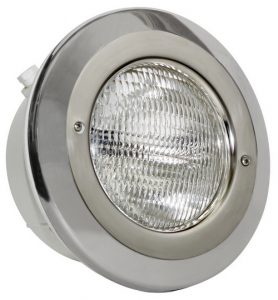 Including horizontal illuminance and vertical illuminance, there are sufficient horizontal illuminance and vertical illuminance. The illuminance of the swimming pool site should meet the requirements of national standards
Including horizontal illuminance and vertical illuminance, there are sufficient horizontal illuminance and vertical illuminance. The illuminance of the swimming pool site should meet the requirements of national standards
In actual engineering, for some swimming venues that often hold major international competitions, higher illumination standards are often used, such as requiring the average illumination on the water surface to reach 1500lx, or the average illumination on the vertical surface of the camera (water surface) to reach 1000lx to meet the competition and Broadcasting requirements.
Second, illumination distribution and brightness distribution
There shall be uniform illumination distribution and brightness distribution, and the illumination uniformity shall meet the provisions of Article 3.1.4 of Chapter III of the National Standard of the People ’s Republic of China “Civil Building Lighting Design Standard GBJ133-90” for illumination uniformity of stadiums.
1.Uniformity of illumination
In the main camera direction of a sports stadium, the ratio of the minimum and maximum vertical illuminance should not be less than 0.4, the ratio of average vertical illuminance and average horizontal illuminance should not be less than 0.25; the ratio of minimum and maximum horizontal illuminance of the field should not be less than 0.5; The vertical illuminance of the auditorium in sports venues should not be less than 0.25 of the vertical illuminance of the venue.
In actual engineering, because it is necessary to prevent glare while meeting the requirements of uniformity of illuminance, it is often difficult to meet the requirements of these two indicators at the same time. Therefore, the rationality of the lighting design of the swimming pool must be ensured by choosing appropriate light distribution and reasonable lighting arrangements.
2.Brightness uniformity
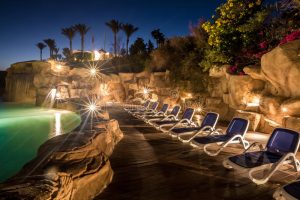 In order to form a good viewing environment, in addition to the provisions for contrast uniformity, brightness uniformity should also be emphasized. Because the brightness distribution in the field of view is appropriate, it is the easiest to see. When watching the swimming movement, the audience’s line of sight is moving. If the brightness distribution changes too much, and the viewing target often changes, it is easy to cause fatigue and discomfort. If the brightness is too uniform, the environment will be too dull. Therefore, a proper brightness uniformity is required.
In order to form a good viewing environment, in addition to the provisions for contrast uniformity, brightness uniformity should also be emphasized. Because the brightness distribution in the field of view is appropriate, it is the easiest to see. When watching the swimming movement, the audience’s line of sight is moving. If the brightness distribution changes too much, and the viewing target often changes, it is easy to cause fatigue and discomfort. If the brightness is too uniform, the environment will be too dull. Therefore, a proper brightness uniformity is required.
3.Light color and color rendering requirements
Should have appropriate light color and good color rendering. The light color of the light source for swimming pools is generally selected to match the color of the daylight. At the same time, considering that the indoor color of the swimming pool is mostly cold-toned, a light source with a color temperature of about 5000k or higher is often used. The color rendering index of the light source of the swimming pool should be greater than 65 according to the national standard. However, in actual engineering, taking into account the effect of color television broadcast, for some important swimming pools, the color rendering index of the light source is often required to reach about 85. However, the increase of the color rendering index will bring problems such as light source life, light efficiency, and price. Therefore, for ordinary swimming venues, Ra≥65 can meet the general television broadcast requirements, and it is not necessary to blindly pursue the high color rendering index of the light source.
4.Glare control
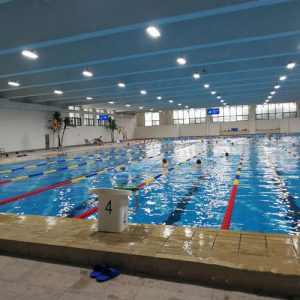 Compared with other sports venues in the city, the swimming pool has its special features in lighting design. The main difference is that the swimming pool water surface will generate waves when the athletes swim, and the light will reflect in the wave range, which will cause serious Glare makes the referee’s technical movements invisible to the referee. At the same time, when the athlete is in danger, due to the effect of glare, it may not be noticed and not rescued in time. Therefore, when we design the lighting, we should This glare is controlled to a minimum. The light source should be effectively shielded to reduce the brightness of the surface of the lamp. Please refer to the relevant provisions of Appendix 5 “Lamp Brightness Limit Curve” in “Industrial Enterprise Lighting Design Standard GB50034-92”.
Compared with other sports venues in the city, the swimming pool has its special features in lighting design. The main difference is that the swimming pool water surface will generate waves when the athletes swim, and the light will reflect in the wave range, which will cause serious Glare makes the referee’s technical movements invisible to the referee. At the same time, when the athlete is in danger, due to the effect of glare, it may not be noticed and not rescued in time. Therefore, when we design the lighting, we should This glare is controlled to a minimum. The light source should be effectively shielded to reduce the brightness of the surface of the lamp. Please refer to the relevant provisions of Appendix 5 “Lamp Brightness Limit Curve” in “Industrial Enterprise Lighting Design Standard GB50034-92”.
5.Lighting distribution: suitable lighting configuration (including the arrangement of lighting and light intensity distribution of lighting), so that it can meet the requirements of glare limitation and the requirements of uniformity of illumination, making it economical and applicable . Generally speaking, asymmetric light distribution is better than symmetric light distribution.
6.Lamp protection: There should be certain protective measures, such as selecting a high-strength, impact-resistant lamp shell to prevent damage to the light source and the lamp.
7.Anti-strobe: Effective measures should be adopted to eliminate strobe effects.
8.Maintenance: The installation location of the lamps should be convenient for maintenance and repair. Due to the relatively large space of the swimming pool, the amount of lamps and light sources is large. Therefore, when designing, the convenience of maintenance and overhaul should be fully considered. Generally, the lamps are installed on the light bridge, and the light bridge is used for maintenance.
9.Switch control: The switch control of the lamps and lanterns should have certain flexibility to make it adapt to the different requirements of contrast levels during formal competitions and training.
Lighting arrangement
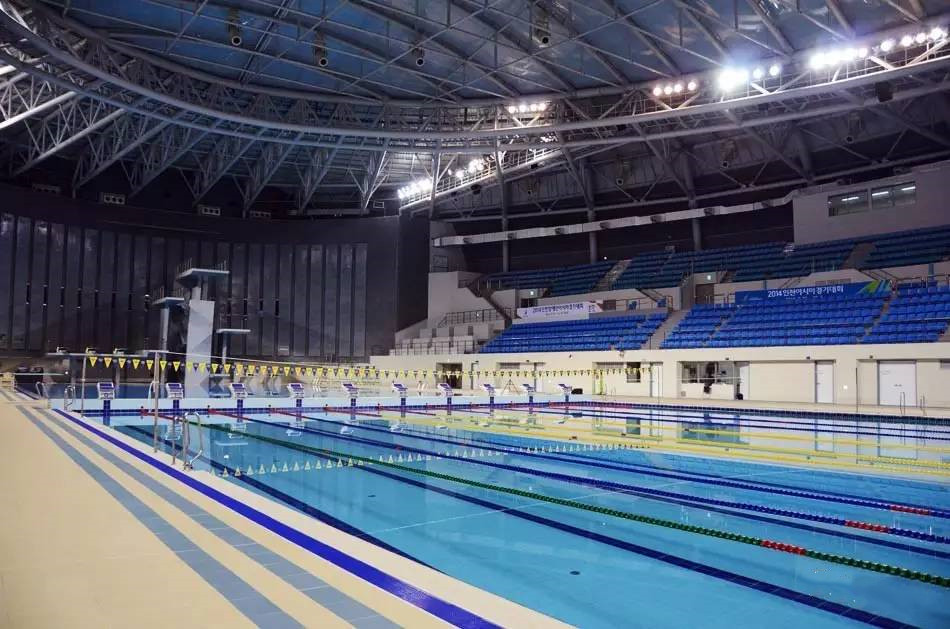 Indoor swimming and diving halls generally consider the maintenance of lamps and lanterns. Generally, lamps are not arranged above the water surface, except for those with dedicated inspection channels above the water surface. For venues that do not have television broadcasting requirements, the lamps and lanterns are often scattered under the ceiling, under the roof, or on the wall. Above the water surface, for venues that require television broadcasting, the lamps and lanterns are generally arranged in a strip style, that is, above the shore of the pool on both sides Arrange longitudinal carriageways, and arrange horizontal carriageways above the banks and at both ends. In addition, it is necessary to set appropriate amount of lamps under the diving platform and springboard to eliminate the shadow formed by the diving platform and springboard, and to give accent lighting to the warm-up pool for diving. It should be emphasized that diving equipment should not be equipped with lamps above the diving pool. Otherwise, a mirror image of the lights will appear in the water, which will cause light interference to the athletes and affect their judgment and performance. In addition, due to the peculiar optical characteristics of the water medium, the indoor swimming and diving hall lamps and horse track layout mainly consider the following issues.
Indoor swimming and diving halls generally consider the maintenance of lamps and lanterns. Generally, lamps are not arranged above the water surface, except for those with dedicated inspection channels above the water surface. For venues that do not have television broadcasting requirements, the lamps and lanterns are often scattered under the ceiling, under the roof, or on the wall. Above the water surface, for venues that require television broadcasting, the lamps and lanterns are generally arranged in a strip style, that is, above the shore of the pool on both sides Arrange longitudinal carriageways, and arrange horizontal carriageways above the banks and at both ends. In addition, it is necessary to set appropriate amount of lamps under the diving platform and springboard to eliminate the shadow formed by the diving platform and springboard, and to give accent lighting to the warm-up pool for diving. It should be emphasized that diving equipment should not be equipped with lamps above the diving pool. Otherwise, a mirror image of the lights will appear in the water, which will cause light interference to the athletes and affect their judgment and performance. In addition, due to the peculiar optical characteristics of the water medium, the indoor swimming and diving hall lamps and horse track layout mainly consider the following issues.
Glare control
 Due to the unique optical characteristics of the water medium, the glare control of swimming pool venue lighting is more difficult and important than other types of venues.
Due to the unique optical characteristics of the water medium, the glare control of swimming pool venue lighting is more difficult and important than other types of venues.
1.Control the reflected glare on the water surface by controlling the projection angle of the lamp. -Generally speaking, the projection angle of the lamps in the stadium is not greater than 60 °, and the projection angle of the lamps in the swimming pool is required to be not greater than 55 °, preferably not greater than 50 °.
2.Glare control measures for diving athletes. For diving, the range of the venue includes 2 meters from the diving platform, 5 meters from the diving board to the surface of the water, the entire trajectory space of the diving athlete. In this space, the venue lights do not allow any uncomfortable glare to the athletes. Strict control of the glare to the camera. That is, the light on the surface of the still water must not be reflected to the field of view of the main camera, and the light emitted by the lamp must not be directed to the fixed camera. It is more ideal if the 50 ° fan-shaped area centered on the fixed camera is not directly irradiated.
Swimming pool professional LED lighting
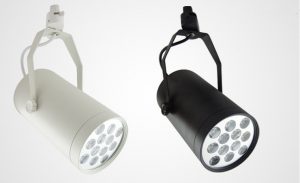 Compared with commercial lighting and home lighting, LED swimming lighting is special in that: On the one hand, in order to ensure that audiences watch games, broadcast on television and other functions, swimming lighting must ensure sufficient illumination; on the other hand, in terms of professionalism and The sensory experience requires extremely high swimming venues. The lighting should be bright without glare, uniform brightness, and effective control of spillover light to ensure that swimmers can complete the task of the competition. With the further implementation of national policies such as national fitness and building a strong sports nation, the concept of protecting the environment, saving energy and reducing emissions has gained popularity, and the advantages of LED lighting in swimming pools have become more prominent. Swimming lighting, an unobtrusive part of China’s sporting goods manufacturing industry, is using it to illuminate the light without glare, to illuminate the intelligent road of the industry.
Compared with commercial lighting and home lighting, LED swimming lighting is special in that: On the one hand, in order to ensure that audiences watch games, broadcast on television and other functions, swimming lighting must ensure sufficient illumination; on the other hand, in terms of professionalism and The sensory experience requires extremely high swimming venues. The lighting should be bright without glare, uniform brightness, and effective control of spillover light to ensure that swimmers can complete the task of the competition. With the further implementation of national policies such as national fitness and building a strong sports nation, the concept of protecting the environment, saving energy and reducing emissions has gained popularity, and the advantages of LED lighting in swimming pools have become more prominent. Swimming lighting, an unobtrusive part of China’s sporting goods manufacturing industry, is using it to illuminate the light without glare, to illuminate the intelligent road of the industry.
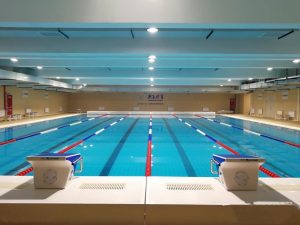 Advantages of swimming pool special LED lighting:
Advantages of swimming pool special LED lighting:
1.High efficiency and energy saving Under the same brightness, LED energy-saving lamps consume only 1 kWh for 1000 hours, ordinary incandescent lamps consume 1 kWh for 17 hours, and ordinary energy-saving lamps consume 1 kWh for 100 hours.
2.The theoretical life of ultra-long-life LED super energy-saving lamps can reach tens of thousands of hours, and the service life of ordinary incandescent lamps is more than 1,000 hours.
3.Healthy light The light does not contain ultraviolet and infrared rays, no radiation, no pollution. Ordinary energy-saving lamps and incandescent lamps contain ultraviolet rays and infrared rays.
4.Green environmental protection does not contain harmful elements such as mercury and lead, which is beneficial for recycling and utilization, and does not generate electromagnetic interference.
5.Vision protection is driven by DC power supply, no flicker. Ordinary lamps are all AC driven, so flicker will inevitably be harmful to eyes for a long time.
6.High light efficiency, low heat generation, 90% of electrical energy is converted into visible light, only 20% of ordinary incandescent light is converted into visible light, and the other 80% of electrical energy is converted into thermal energy, which is a great waste of limited resources.
7.high safety factor required voltage, current is small, less heat, no safety risks, can be used in mines and other dangerous places.

